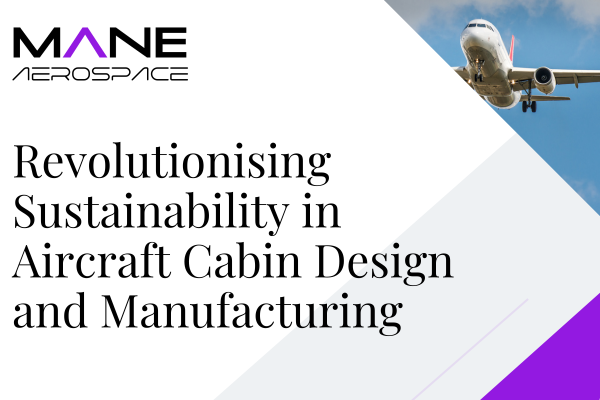Revolutionising Sustainability in Aircraft Cabin Design and Manufacturing
24 Oct, 20242minsRevolutionising Sustainability in Aircraft Cabin Design and ManufacturingThe Hidden Environm...

Revolutionising Sustainability in Aircraft Cabin Design and Manufacturing
The Hidden Environmental Impact of Aircraft Cabins
While engines and fuels often dominate discussions about aviation's environmental impact, aircraft cabins play a significant, often overlooked role. Accounting for roughly 10% of an aircraft's empty weight and typically replaced 4-5 times during an aircraft's lifespan, cabins contribute substantially to both operational and non-operational environmental impacts.
The UK's Stake in Sustainable Cabins
The UK's aircraft interiors sector is a significant player, with over 250 suppliers generating a combined turnover exceeding £2.0 billion and supporting more than 6,000 jobs. This includes manufacturers of nearly every cabin component, innovative materials suppliers, world-class design agencies, and a high concentration of aircraft recycling companies.
Challenges in Creating Sustainable Cabins
1. Weight Reduction Limitations: Most cabin products are already highly optimised, making further weight reductions increasingly challenging.
2. Certification Hurdles: Safety requirements often discourage the adoption of new, potentially greener technologies.
3. Circular Economy Difficulties: Aircraft cabins are particularly challenging to recycle, contributing significantly to landfill waste.
4. Cross-Sector Collaboration: Many circularity opportunities require partnerships that are currently underdeveloped.
5. Material Concerns: Many established materials have negative sustainability characteristics but are relied upon due to certification requirements.
6. Limited Understanding: There's a low level of comprehension about the cabin's environmental impact beyond its weight.
Recommendations for a Greener Future
To address these challenges, a multi-faceted approach is needed:
1. Technology Integration: Assess and sequence the introduction of promising cabin technologies.
2. Value Chain Collaboration: Involve airlines, airframe OEMs, cabin OEMs, and suppliers in co-developing sustainable interiors.
3. Waste Management: Enable the re-use of production waste across industries and consolidate waste outflow into suitable material sources for other sectors.
4. Material Traceability: Make materials identifiable and share data to enable re-use.
5. Lifecycle Strategies: Define full-life strategies to minimise product impact and total lifetime maintenance and disposal impact.
6. Circular Economy: Enable recycled material from cabins to be used in other industries and vice versa.
7. Flexible Design: Enable easy rebranding of cabin furniture to extend usable life.
Priority Areas for Material Innovation
Based on lifecycle assessments, several cabin components should be prioritised for sustainable redesign:
• CFRP seat back structures
• Virgin aluminium seat structures
• Woollen seat covers
• Melamine and polyurethane seat cushions
• Inconel and steel fasteners
• Aramid core composite panels
• PET and PP air ducts
• Copper wiring
• Conventional IFE displays
Promising Technologies
Several technologies offer potential for both weight reduction and sustainability improvement:
1. Bio-inspired Design: Using topology optimisation and generative design for lightweight structures.
2. Aerogels: As lightweight replacements for insulation and composite panel cores.
3. Solid State Batteries: Offering lighter and safer alternatives to lithium-ion batteries.
4. Multi-colour Laser: Enabling replacement of copper wiring with fibre optics.
5. Rectennas: Printable, smart material markings to facilitate recycling.
The Path Forward
To truly revolutionise cabin sustainability, the industry must:
1. Establish baseline carbon footprints for existing product management practices.
2. Quantify the potential carbon footprint reductions from circular product pathways.
3. Align with other sectors, particularly automotive, to facilitate knowledge transfer on sustainability initiatives.
By addressing these challenges and embracing innovative solutions, the aircraft cabin industry can play a crucial role in aviation's journey towards sustainability, creating greener skies for future generations.



